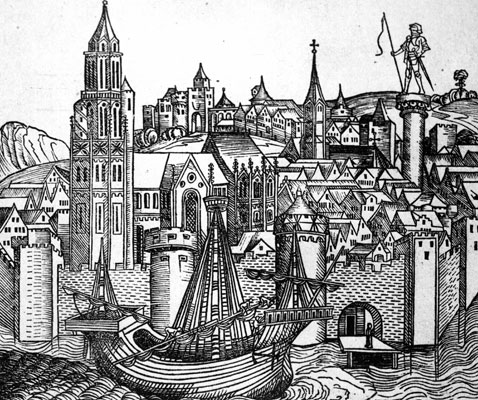Fr : version française / En: english version
Sheltered by the ramparts
Another image of power, though more defensive, stems from the medieval design of cities as fortified towns. In Paris, Philippe Auguste built a surrounding wall stretching over five kilometers in circumference. Once complete, in 1213, it still contained cultivated land, but building work continued at such a pace that streets were soon no more than the space between two edifices.
Holding the high ground
Although people began paving city streets in the Middle Ages, there were still no sidewalks. The streets were concave or V-shaped to allow wastewater to run down the middle, meaning people walked as close as possible to the edge of the street and the buildings to stay clean and dry. When two people had to pass one another, the poorest of the pair ceded the "high ground" to his richer counterpart. This gave rise to the French expression "tenir le haut du pavé" (literally, "holding the upper paving"), used to describe someone with a privileged position or rank.
Passages were narrow and dark, made even gloomier by the corbelled architecture (jutting out from the walls). The streets doubled as sewers, and struggled to bear away waste from a wide range of activities, including slaughtering and disposal.
Philippe Auguste was appalled by this and ordered that the streets be paved, marking the start of a project that would last seven centuries!
Piggy in the middle
The young King Philippe died in 1131, not long after being crowned by his father Louis VI in Rheims. The fatal accident occurred when the king's horse stumbled over a pig in a narrow street, as a result of which the young monarch fell, sustaining a head injury from which he died the next day. Following this event, a law was passed making it an offence to allow pigs to wander the city streets. However, fears of offending Saint Anthony meant that pigs belonging to the saint's abbey were exempt from the law, provided they wore a bell around their necks.
In 1386, a judge in Falaise sentenced a sow to be hanged, drawn and quartered for killing a child.
Extract from the Great Dictionary of Cuisine by Alexandre Dumas (Free translation from the French).



























